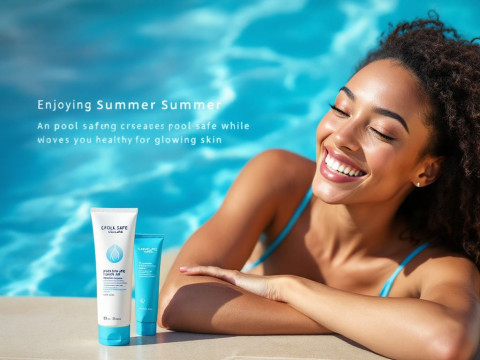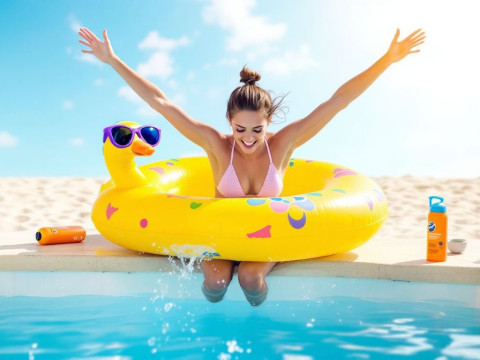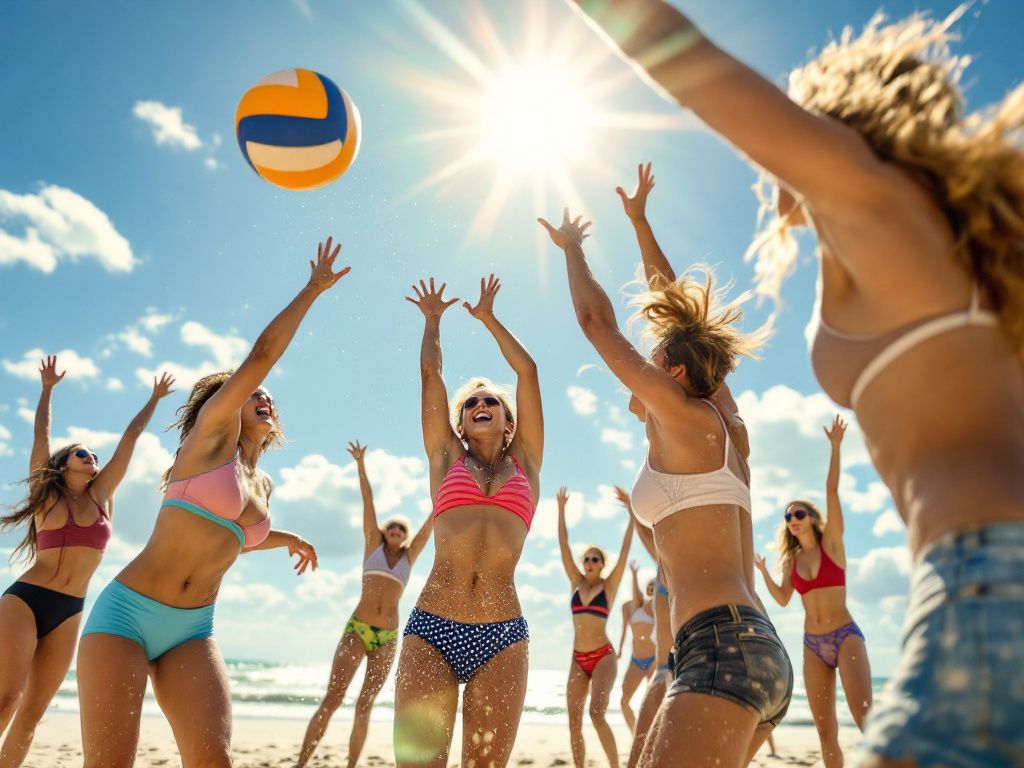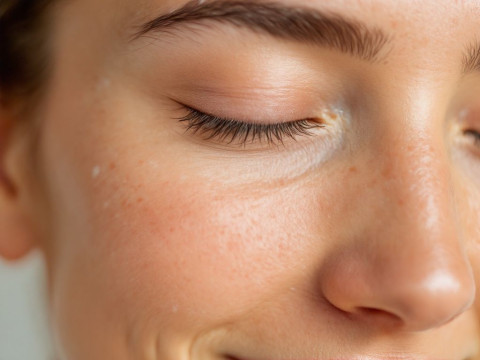Hey there, beach volleyball enthusiasts! Ever find yourself sprinting towards the net and, in-between sets, that blazing sun makes you wonder if your skin will forgive you later? You’re not alone. We’ve all been there—caught up in the excitement of the game, only to realize that summer intensity does a number on our skin. And let’s talk about sports acne for a bit. Ever noticed those stubborn bumps showing up after an epic day of serving and spiking? Well, let’s dig into why this happens and how you can enjoy your beach sessions without worrying about your skin. Sound good?
Why Skin Protection Is Crucial for Beach Volleyball Players
Playing beach volleyball can be exhilarating. The sand between your toes, crashing waves in the background, but there’s a formidable opponent—damaging UV rays. The sun can be relentless, and constant exposure puts your skin at risk. We’re talking sunburns, early aging, and yes, pesky summer acne. When you’re diving for that ball, the last thing you need is the added distraction of irritated skin.
The Impact of Sun Exposure
Sunlight is responsible for pumping vitamin D into our system—great, right? But overexposure can result in sunburns and instrumental in triggering inflammation, which spells trouble for acne-prone individuals. Those lengthy hours basking in sunlight without protection can encourage skin to produce more oil, setting the perfect stage for sports acne.
Building a Game Plan: Effective Skin Protection Strategies
Let’s get strategy-oriented, just like you are on the court.

- Sunscreen Is Your Best Defense:
- Always opt for a broad-spectrum sunscreen that guards against both UVA and UVB rays. Look for labels that say “water-resistant” since, oh boy, you’re bound to sweat out there. SPF 30 or higher is your best bet—go for it, and remember to reapply every two hours or immediately after a match.
- Protective Gear:
- If you can, wear sun-protective clothing. Some jerseys are fabricated with UV protection in mind. Hats and visors are also essential for shading your face, reducing the risk of sunburn and overheating.
- Timing Is Everything:
- Planning practice or play early in the morning or late afternoon minimizes exposure to the sun’s peak hours. You don’t have to avoid noon games like the plague, but keep mindful of those UV indices.
- Sports Acne Prevention System:
- Your skincare routine needs attention just as you maintain your training regimen. Cleanse your face and body with a gentle, non-comedogenic cleanser both before and after your games. It’ll help remove that mix of salt, sweat, and sand that can trigger acne.
DIY Trip-Wire: Simple Homemade Remedies
Okay, moving on to the fun stuff. Here’s a few things you might like to try out.
- Aloe Vera Relief: This plant is a knight in shining armor when it comes to soothing sunburns and calming irritated skin. Quickly rub a layer of pure aloe vera gel on as needed, straight from nature’s treasure chest.
- Green Tea Mist: Loaded with antioxidants, brew some strong green tea, let it cool, and splash it on sensitive areas. If you’re in a mood for DIY, even make a facial mist spray bottle for easy refreshing on the go.
The Link: Summer Acne and Active Play

Beach volleyball can leave you abrasively scrubbed by sand and drenched in an unwelcome layer of sweat-moisture—a sheer recipe for summer acne! Your pores can clog from dirt, microbes, and that delightful cocktail of grit and sweat. Avoid fabric softeners when washing your sports gear too, as these sticks to fabric fibers and can also irritate your skin. Go for detergents that are gentle and residue-free.
Competitive Edge: Recommendations for the Summer Season
Give these twists a shot, ride that summer slam, and keep acne breakouts at bay:
- Avoid Heavy Lotions: Ditch em. Lighter, gel-consistency moisturizers for after-sun top-ups will work great and chill on your skin.
- Hydration is Key: Drinking plenty of water before, during, and after games counters dehydration, helps your skin maintain balance, and clears out toxins. Playing outdoors will need extra effort to keep those hydration levels up.
The Grand Volley: Mistakes to Sidestep
Let’s head-off some common missteps.
- Mistake One: Overlook Reapplying Sunscreen:* This bit compresses all confusion—don’t apply once and call it good for the day. Consistent reapplication is where it’s at, every bit pays off.
- Mistake Two: Ignoring After-Care.* Your cool-down routine should include skin care focus, especially essential cleansing and any soothing needed thereafter.
- Mistake Three: Neglect Lip Protection:* Yep, the skin on your lips is super thin and can burn easily, so slap on some lip balm with SPF to score bonus points on protection!
Detox and Ready-Up: Your Skin Can Win, Too

After the game, after the celebrations and handshakes, always give your skin a little extra love. A detoxifying mask can assist with digging deep to unclog any remnants from an intense, active day. Charcoal masks or clay masks are fabulous! However, don’t overdo these – once or twice weekly will support your skin’s recovery process.
Oh, and time for a personal side note—just remember to take things slow. If your skin reacts negatively to a certain product, trust yourself to go easy on it or step away entirely.
Long-term Vision: Consistency Wins Matches
Just like that perfect spike, consistency gets you over the line in skin protection. Trust this rhythm for an engaging skin routine—one that fuels you to play fiercely and love generously. Listen, understand your skin’s unique needs, whether prone-to-oiliness or sensitive flair-ups.
Keep revisiting these pointers to fine-tune as you discover what works best for you over time. Playing safe is not one-and-done, but instead is deeply-inclusive of where your practices line-up for that match-play.
And there you have it—a complete, down-to-earth volleyball-friendly skin guide without skimming out an idea here and there we discussed. Ready to hit the sand? Go break a leg (well not literally, you get it)—your skin will thank you!
Frequently Asked Questions
What is sports acne?
Sports acne, often referred to as *acne mechanica*, is a type of acne caused by friction and pressure on the skin from sports equipment or clothing. This friction can lead to irritation, trapping heat and sweat, and ultimately causing acne breakouts[1][5][4).
Which sports and equipment are most likely to cause sports acne?
Sports acne can occur in various sports, particularly those involving protective gear. Examples include football (helmets, chin straps, shoulder pads), hockey (helmets, chest protectors), cycling (helmets), and shot put (cradling the shot against the neck). Other activities like backpacking, gymnastics, and weightlifting can also lead to acne mechanica due to the friction from equipment and clothing[1][4][5).
How can I prevent sports acne?
To prevent sports acne, it is recommended to use clean, soft padding between the equipment and your skin, wear moisture-wicking clothes to reduce sweat and friction, and trade tight-fitting clothes for loose-fitting ones. Additionally, practicing good post-workout hygiene, such as showering immediately after exercise and using salicylic acid or benzoyl peroxide products, can help prevent breakouts[1][2][3).
What treatments are effective for sports acne?
Effective treatments for sports acne include using acne medications with salicylic acid to unclog pores, benzoyl peroxide to kill bacteria and reduce inflammation, and over-the-counter retinoid gels like Differin. Regularly cleaning equipment and wearing non-comedogenic products can also help manage and prevent acne[2][3][4).
References- Is sports equipment causing your acne?. American Academy of Dermatology.
- Tackling Sports-Related Acne: Strategies for Treatment and Prevention. Annapolis Moms Media.
- Is your workout causing your acne?. American Academy of Dermatology.
- Sports season and body acne: 4 tips to bench this teen health issue. Marshfield Clinic Health System.
- Acne Mechanica: Causes, Treatment, and Prevention. Healthline.











